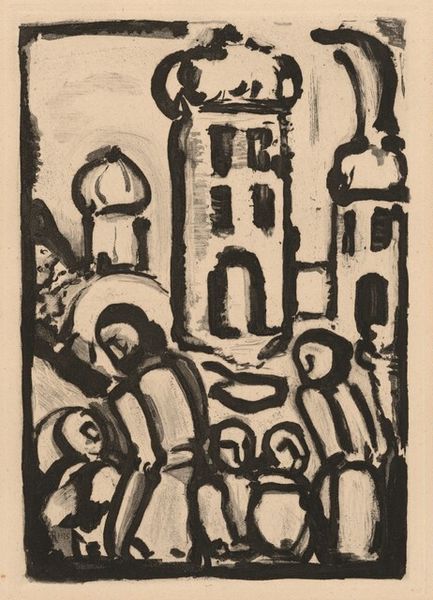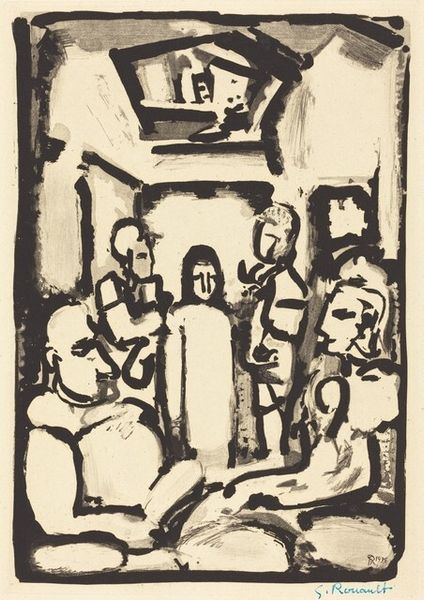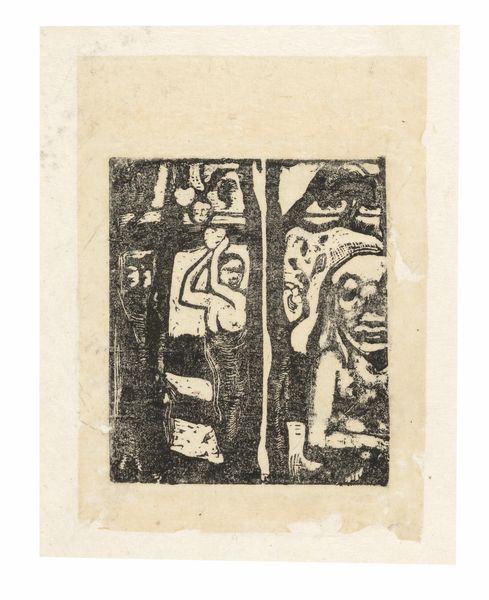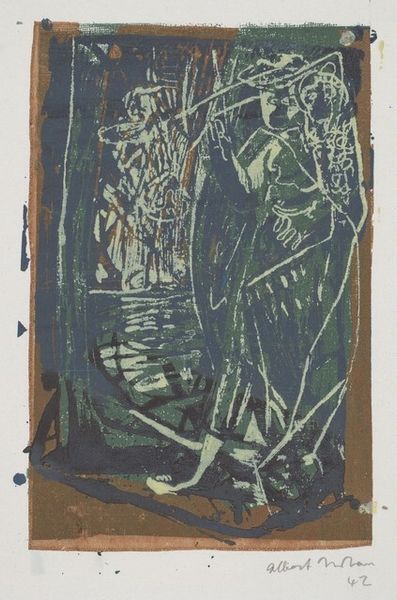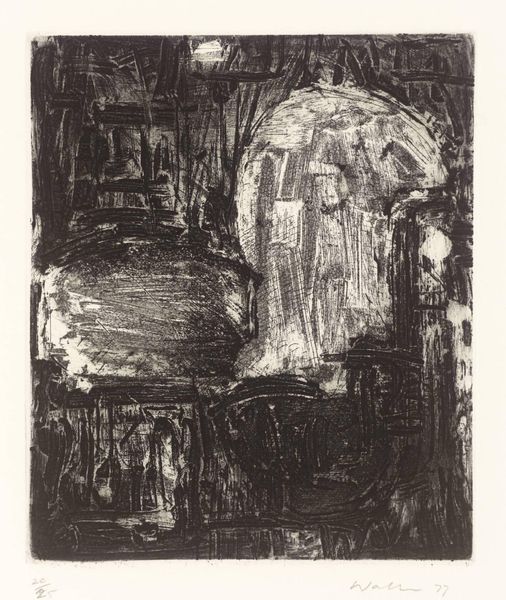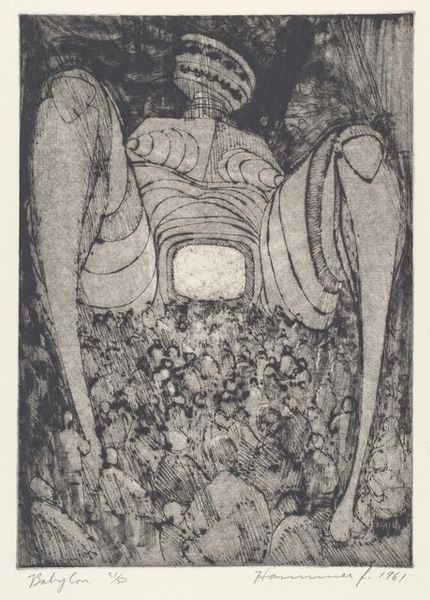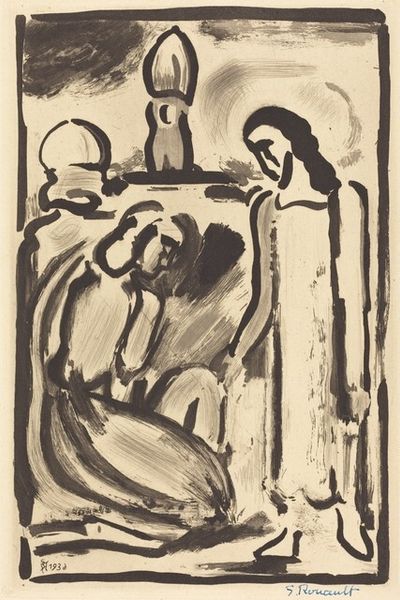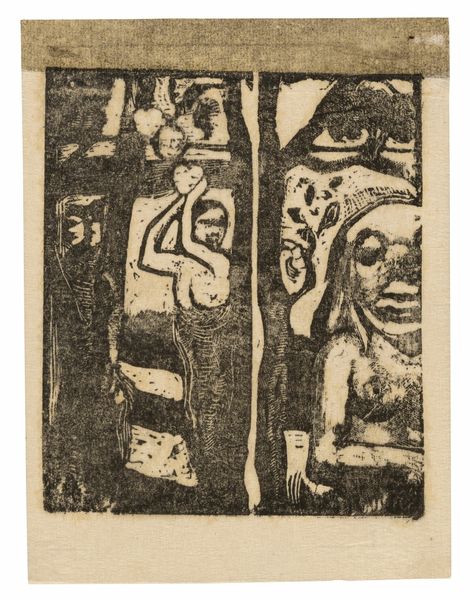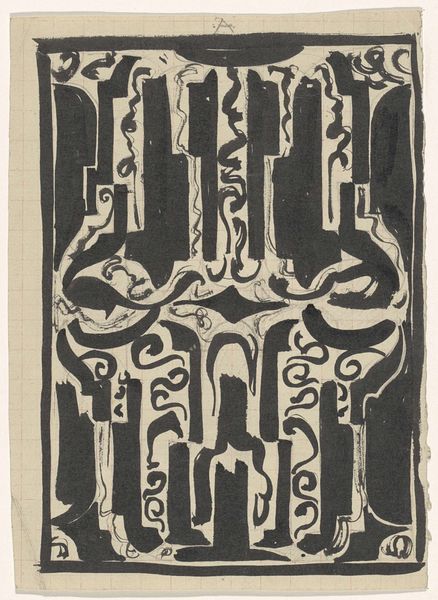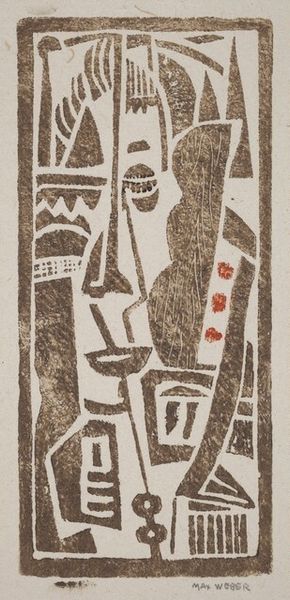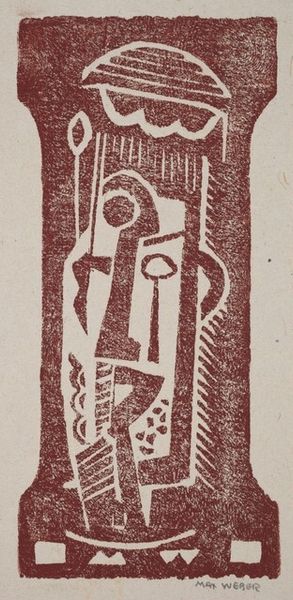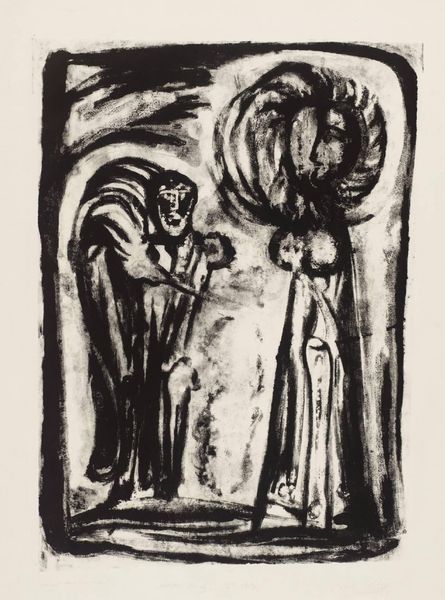
Copyright: National Gallery of Art: CC0 1.0
Editor: Here we have Georges Rouault's "Christ aux Portes de la Ville (Frontispiece)" from 1935, a striking print in monochrome. I’m immediately drawn to the stark contrast and heavy lines. What's your take on this piece? Curator: I'm struck by Rouault's focus on the materials and processes involved. The bold, almost brutal, application of ink suggests a direct, physical engagement with the plate. We should consider how this "raw" approach subverts traditional printmaking, blurring the line between a reproducible image and a unique, hand-crafted object. How might the mass production potential of printmaking actually inform Rouault’s choice to make this frontispiece a print rather than an easel painting? Editor: That's interesting. I hadn’t considered the social implications of choosing printmaking as a medium. Are you saying that the act of creating multiple copies influences how we understand the image's meaning, making it a critique on the value assigned to artworks versus reproductions? Curator: Precisely! Consider the title, "Christ at the Gates of the City." Rouault highlights Christ's entry, and the stark monochrome palette intensifies the solemnity. But how does this become a reflection on labor and material? Rouault frequently worked in series, producing work intended for wide distribution that challenged what would be defined as high art. What boundaries of this nature, do you think, is Rouault seeking to overcome? Editor: That makes me reconsider the thick black lines. They almost resemble lead lines in stained glass, a traditionally 'craft' medium. Curator: Yes! Rouault draws on what some consider less fine art, and by implication challenges traditional hierarchy between the crafts and arts! Ultimately Rouault's print speaks volumes about artistic intent, consumption, and accessibility, which have important implications in Modern artmaking processes and circulation. Editor: That definitely gives me a new perspective. I came in thinking about religious iconography, but now I’m also considering the production and dissemination of the work itself.
Comments
No comments
Be the first to comment and join the conversation on the ultimate creative platform.
